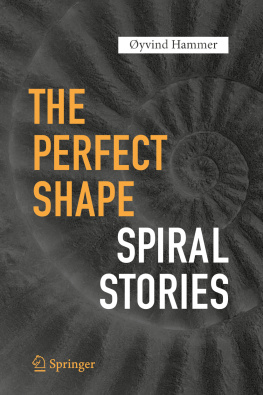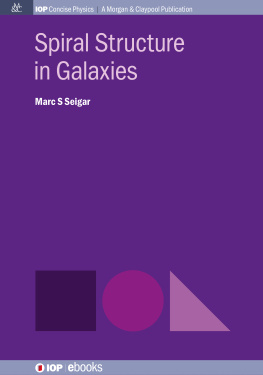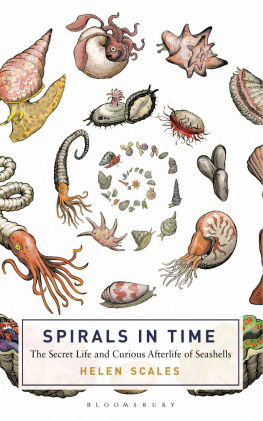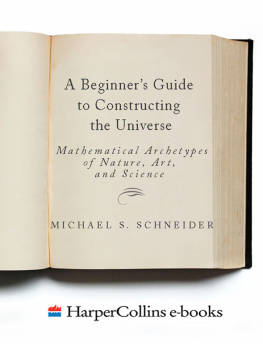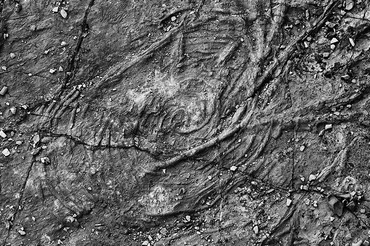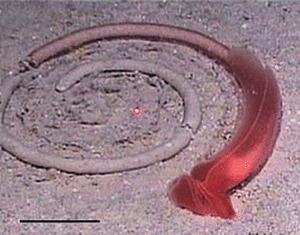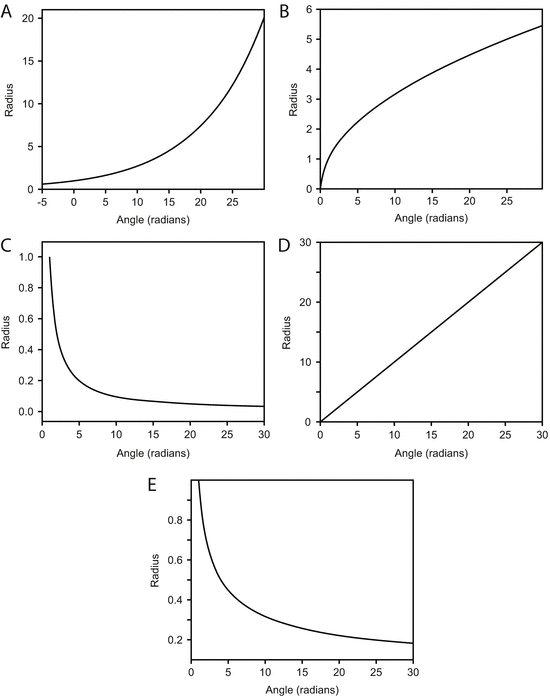Springer International Publishing AG 2016
yvind Hammer The Perfect Shape 10.1007/978-3-319-47373-4_1
1. Spirals of the Abyss
yvind Hammer 1
(1)
Natural History Museum, University of Oslo, Oslo, Norway
In shales formed from deep-sea muds, all over the world, geologists keep stumbling upon the intriguing trace fossil Spirorhaphe . A perfect spiral, a foot or more in diameter, is imprinted upon the petrified sea floor like a bronze-age ornament. Such spirals date back at least to the Ordovician period, some 460 million years ago, and continue through the geological record almost to the present day. But what are they? The organism responsible for these fantastic feeding traces was believed to be extinct, and its identity forever lost to science (Fig. ).
Fig. 1.1
The trace fossil Spirorhaphe , ca. 20 million years old, Spain. Photo Falconaumanni, Creative Commons Attribution-Share Alike 3.0 Unported license
Then, in 1962, when scientists lowered a camera into the Kermadec Trench in the southwestern Pacific, beautiful, modern-day Spirorhaphe traces were finally revealed (Bourne and Heezen ). One of the pictures even seemed to capture the trace-maker in action. It looked like an acorn worm , a representative of an enigmatic group that fits only uncomfortably into the System of Animals but has been placed in the phylum Hemichordata. And it was huge: with a diameter of 5 cm it was quite a monster compared with most of its shallower-water brethren.
As more pictures were taken from the deep sea, these spirals turned out to be relatively common. The famous photographic volume The Face of the Deep (Heezen and Hollister ).
Fig. 1.2
Acorn worm with its trail, North Atlantic. Scale bar 5 cm. Adapted by permission from Macmillan Publishers Ltd: Nature, Holland et al., copyright ()
Almost since the conception of animal life, this slimy worm has been sitting in the eternally dark and cold depths of the sea, silently spinning its spirals at a rate of 5 mm per minute. Hundreds of thousands of millennia passed. Life ventured onto land. Dinosaurs came and went; mammals and birds conquered the dry world. For the deep-sea acorn worm , nothing of this mattered much. It sat down there where the sun never shines, surviving, hardly moving.
How appropriate that it builds a perfect spiral, the symbol of eternity.
References
Bourne, D. W., & Heezen, B. C. (1965). A wandering Enteropneusta from the Abyssal Pacific, and the distribution of spiral tracks on the sea floor. Science , New series, (3692), 6063.
Heezen, B. C., & Hollister, C. D. (1971). The face of the deep . Oxford: Oxford University Press.
Holland, N. D., Clague, D. A., Gordon, D. P., Gebruk, A., Pawson, D. L., & Vecchione, M. (2005). Lophenteropneust hypothesis refuted by collection and photos of new deep-sea hemichordates. Nature, 434 , 374376. CrossRef
Springer International Publishing AG 2016
yvind Hammer The Perfect Shape 10.1007/978-3-319-47373-4_2
2. The Spiral Zoo
yvind Hammer 1
(1)
Natural History Museum, University of Oslo, Oslo, Norway
A spiral is usually defined as a curve in the plane that winds around a central point, moving away from the point as it revolves. It is a somewhat imprecise definition, perhaps, but it will do for our purposes. It is usually a good idea to express spirals in terms of polar coordinates , where the radius r is a function of rotation angle (phi) (Fig. ):
Fig. 2.1
In polar coordinates , the position of the red dot is given as (, r )
According to the definition, as the curve winds around the origin, the angle increasing, the radius r should also increase. I guess it could sometimes decrease a little bit without the spiral crashing into itself, but let us be a little strict and require that r increases all the time. It could also decrease all the time, so that the spiral moves inwards instead of outwards. In other words, f () is a monotonic function. Now there are many monotonic functions , and each of them will produce a spiral in polar coordinates . Mathematicians are fond of putting names on curves, and spirals are no exception. Given any simple monotonic function, chances are very high that the corresponding spiral has a fancy name. Just a few of them are given in Figs.. They are certainly all pretty, and most of them are really interesting as well. We will start with the simplest of them all.
Fig. 2.2
Monotonic functions in Cartesian coordinates. ( a ) Exponential function, r = e k . ( b ) Square root function, r =. ( c ) Hyperbolic function, r =1/. ( d ) Linear function, r = k . ( e ) Inverse square root function, r =1/
Fig. 2.3
The same monotonic functions as in Fig. , but plotted in polar coordinates . ( a ) Logarithmic spiral , r = e k . ( b ) Fermat spiral , r =. ( c ) Hyperbolic spiral , r =1/. ( d ) Archimedes spiral , r = k . ( e ) Lituus , r =1/
Springer International Publishing AG 2016
yvind Hammer The Perfect Shape 10.1007/978-3-319-47373-4_3
3. A Bearded Man in a Bathtub
yvind Hammer 1
(1)
Natural History Museum, University of Oslo, Oslo, Norway
The true depth of the Greek contributions to human progress is under-communicated. Classical Greek philosophers and artists are highly praised more or less by convention. Still, there is an underlying sentiment that it was all very good for its time , but nothing compared with modern stuff, of course. Aristotle , did he not say a lot of silly things, retarding science until the Renaissance? Pythagoras, was he not that hippie with quaint ideas about some polyhedron or other? And Archimedes? His main claim to fame is that he discovered that he floated in the bathtub, so he jumped up and shouted Eureka. All well and good, but surely not quite Einstein.
Most of us do not learn Greek anymore, but luckily, there are translations of the main classical works. Euclid's Elements is available in paperback. That volume (a collection of 13 books) is a brutal revelation. The intellectual determination, the level of intelligence, the modern way of thinking, and not least the massive scale, are all astonishing. We may be familiar with individual, clever theorems and proofs, such as the Pythagorean theorem, but there are hundreds of those in Euclid , building each other up into an enormous, elaborate but solid structure. It is hard to believe that this is a work from Antiquity, and not some modern fake by a brilliant conman. The Elements is not good considering its age. It is an enormous mathematical achievement judged by modern standards.

